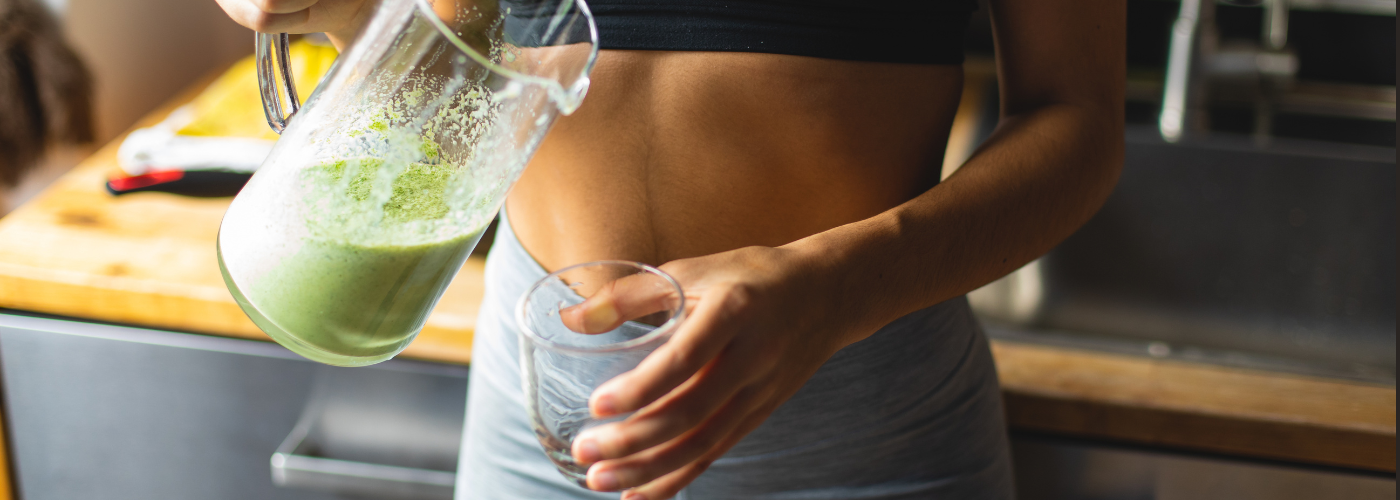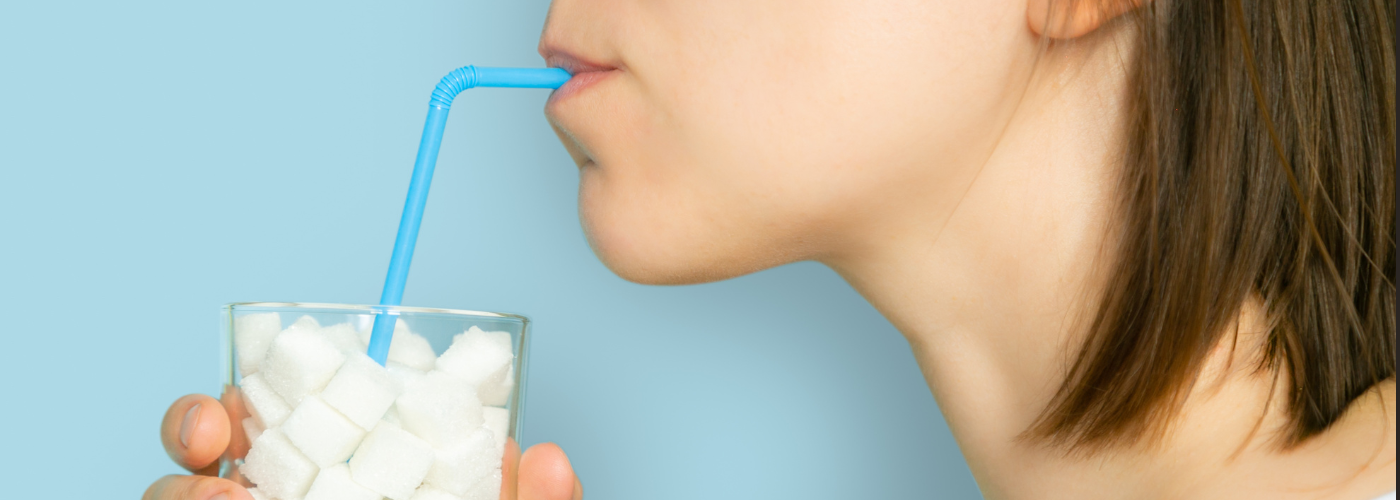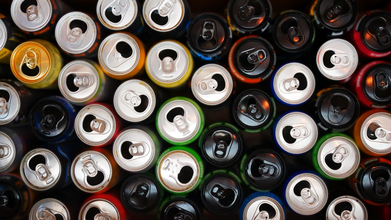- Health Conditions A-Z
- Health & Wellness
- Nutrition
- Fitness
- Health News
- Ayurveda
- Videos
- Medicine A-Z
- Parenting
What Is Sugar Detox? Symptoms, Side Effects, Recipes To Try

In a world where sugar creeps into nearly everything we consume, a sugar detox can be the most transformative journey toward better health. Cutting back on sugar intake is not about cutting calories alone; it is a comprehensive reset of the body and mind to get healthier. Whether your aim is weight loss, more energy, or preventing diseases, a sugar detox is a great first step in that direction. However, like any major diet change, it is not without its drawbacks. Let's dive into the nitty-gritty of sugar detox, symptoms, side effects, and recipes to try.
What is a Sugar Detox?
A sugar detox is essentially the removal of all added sugars sometimes even natural sugars in fruits for a specific time, usually a week to a month. The point is to reset your taste buds, normalize your blood sugar levels, and break the vicious cycle of sugar craving.
It can be associated with a host of diseases, such as obesity, type 2 diabetes, heart disease, or poor dental health, among others. Still, an average American consumes more added sugars than he or she should. According to the American Heart Association, women have no more than 24 grams or 6 teaspoons of added sugar per day, while men have no more than 36 grams or 9 teaspoons per day.

Reducing sugar consumption not only limits the risk to chronic diseases but also gives a more energetic feeling, clarity in mental processing, and enhanced healthier skin. Withdrawal effects can be experienced when giving up on sugars since one's body must adjust to the less intake of sugar.
Symptoms of Sugar Detox
During the initial stages of a sugar detox, your body will react interestingly as it readjusts to the reduced consumption of sugar. The symptoms may comprise of;
These symptoms usually subside within a few days to weeks as your body adapts to the changes.
Benefits of a Sugar Detox
Despite the challenges, the benefits of a sugar detox are worth the effort:
- Improved Energy Levels: Without sugar-induced spikes and crashes, you’ll enjoy sustained energy throughout the day.
- Better Skin Health: Reduces acnes and ages prematurely.
- Weight Loss: Sugar reduction leads to a caloric deficit. It curbs the craving that can be easily reduced with some sugar reduction in the diet.

- Better Mental Clarity: Cutting sugar out balances blood sugar and reduces brain fogginess.
- Lower Chronic Disease Risk: This includes diabetes, heart disease, and liver disorders.
Also Read: What Is The Best Breakfast You Can Have After Having Too Much Sugar
How to Start Your Sugar Detox
1. Set Clear Goals
Define your motivation for detoxing from sugar, whether it’s weight loss, better energy, or health improvement. Setting realistic expectations can help you stay focused during the detox period.
2. Prepare Yourself
Declutter your kitchen and remove sugary snacks and drinks, replacing them with whole foods. Educate yourself and understand how sugar affects the body and the benefits of reducing it.

3. Plan Balanced Meals
Plan your meals with nutrient-dense foods like vegetables, lean proteins, healthy fats, and whole grains. Read food labels carefully to avoid hidden sugars.
4. Stay Hydrated
Drink plenty of water and herbal teas to combat cravings and prevent dehydration.
5. Find Healthy Alternatives
Use natural sweeteners like stevia sparingly, and satisfy your sweet tooth with fruits like berries or naturally sweet vegetables such as sweet potatoes.
Possible Side Effects of Sugar Detox
As with any detox, side effects may occur, including:
- Temporary hunger increases
- Bowel irregularities (constipation or diarrhea)
- Flu-like symptoms (sugar detox flu)
- Dry mouth and bad breath
- Increased thirst or sweating
To avoid these side effects, one has to make some preparations. Consumption of protein-based foods, higher fiber, plenty of hydration, and reduction in stress will also help during detoxification.
Why Does Quitting Sugar Feel Like Such a Task?
Sugar works on the brain's reward system in much the same way that addictive substances do. It releases dopamine, creating a pleasurable feeling that strengthens cravings. The absence of this "reward" can lead to withdrawal symptoms when sugar intake is reduced, making it hard to stay on track.

Recipes to Support Your Sugar Detox
1. Green Smoothie Bowl
Ingredients:
- 1 cup spinach 1/2 avocado
- 1/2 unsweetened almond milk
- 1/2 banana (optional)
- Chia seeds, for topping.
Place all the ingredients in a blender and top with chia seeds to have a healthy beginning of the day.
2. Zucchini Noodles with Pesto
Ingredients
- 2 zucchinis spiralized
- 1/4 cup fresh basil
- 2 tbsp olive oil
- 1 tbsp pine nuts
Toss noodles with pesto for a fast, sugar-free lunch or dinner.
A sugar detox is more than a diet; it's a commitment to improving your health and well-being. Although it may be quite challenging at the beginning, its benefits are beyond the discomfort that comes with the process. Better energy levels, clearer mental capacity, and even reduced risks of diseases can make cutting sugar worthwhile. Begin your sugar detox today and see how it changes everything.
Disclaimer: This article is for information purpose only. Always consult a healthcare professional before making significant dietary changes, especially if you have known underlying health conditions.
What Is the Evidence for "Food Addiction?" A Systematic Review. Nutrients. 2018
2015-2020 Dietary Guidelines. Office of Disease Prevention and Health Promotion
Can Eating Cheese Reduce Dementia Risk? Scientists Find A Surprising Link

Credits: Canva
Cheese And Dementia Risk: One of the world’s most loved foods may offer an unexpected benefit for brain health. A long-term study has shown that regularly eating high-fat cheese is linked to a lower chance of developing dementia.
The findings come from research published December 17 in Neurology, the medical journal of the American Academy of Neurology. Scientists in Sweden examined dietary information from roughly 27,600 participants in the Malmö Diet and Cancer study, who were followed for an average of 25 years, and discovered a surprising connection between cheese consumption and dementia risk.
Cheese And Dementia Risk: Eating Cheese Linked To Lower Dementia Risk
High-fat cheeses and cream may help reduce the risk of dementia, according to a new study. Published in Neurology, the research found that individuals who included two servings of high-fat cheese in their daily diet were less likely to develop dementia. Participants who ate 50 grams or more of high-fat cheese per day had a 13% lower risk compared to those who consumed less than 15 grams, the study reported. Similarly, people who included more high-fat cream in their diet had a 16% lower risk than those who had none, as per USA Today.
While the study shows an association between high-fat cheese and cream and reduced dementia risk, it does not prove that eating these foods directly prevents the condition. “This does not prove that cheese prevents dementia, but it does challenge the idea that all high-fat dairy is harmful for the brain,” said study co-author Emily Sonestedt, a nutrition researcher at Lund University in Sweden, where the Malmö Diet and Cancer study is based, in an interview with USA TODAY. “For most people, it means that enjoying cheese in reasonable amounts, as part of a balanced diet, does not appear harmful and may even have some benefit.”
Cheese And Dementia Risk: Which High-Fat Cheeses Were Linked To Lower Dementia Risk In The Study?
The Swedish research specifically linked daily intake of high-fat cheeses—Brie, Gouda, and Cheddar—to a lower risk of developing dementia. Participants who consumed at least 50 grams of these cheeses each day experienced a 13% drop in dementia risk compared to those who ate smaller amounts.
The study also noted reduced risks of Alzheimer’s disease in certain genetic groups, though the researchers caution this does not prove a cause-and-effect relationship. Rather, it challenges the assumption that all high-fat dairy negatively affects brain health. Experts highlight that including these cheeses in moderation, as part of a balanced diet, could be beneficial.
Importantly, how cheese fits into a person’s overall diet may influence dementia risk. Sonestedt pointed out that U.S. dietary habits differ from Sweden’s, where cheese is often eaten uncooked, while in the U.S., it’s frequently heated or paired with meat. “A person’s overall dietary context matters,” she said. “Cheese eaten on a hamburger or with processed meat is very different from cheese eaten with healthier foods. We are not suggesting people switch to high-fat cheese as a strategy.”
Cheese could still be a healthier alternative in some cases. “Choosing cheese instead of a hotdog may be a step in the right direction,” said Yeh, “but the broader body of evidence suggests there are even better options for supporting cognitive health.”
The findings arrive as Health and Human Services Secretary Robert F. Kennedy Jr.’s Make America Healthy Again commission pushes to reintroduce whole milk in schools, despite ongoing questions about the health impact of saturated fats in milk.
Can You Consume Energy Drink Daily? This Is What The Experts Say

Credits: iStock
Energy drink is linked with stroke risk was found out when a fit 54-year-old man suffered stroke. Previously Health and Me also reported about the man, a non-smoker and non-drinker, who suffered stroke, thanks to his habit of consuming energy drinks. The doctors found his blood pressure to be sky rocketing. His left side of the body was weak, he lost balance, had trouble walking and speaking.
Another similar case comes from Canada, where a 10-year-old also suffered a seizure, consuming just two energy drinks in the week.
Experts are now weighing in if it is at all safe for anyone to consume energy drink.
Read: How Energy Drinks Nearly Killed a Healthy 54-Year-Old Runner
Energy Drink: Are They Safe To Consume?
As per the Food and Drug Administration (FDA), energy drinks are "pure and highly concentrated caffeine products can have serious health consequences, including death."
A BMJ study from 2025, Energy drinks, hypertension and stroke, found high morbidity and mortality rates associated with stroke and cardiovascular disease linked to high-sugar drink consumption.
Energy Drink: What Do experts Think Of Its Safety?
Speaking to wmur.com, Dr Raj Dasgupta, a board-certified physical who specializes in internal medicine, pulmonology critical care, and sleep medicine said, "Caffeine is a stimulant, which means it increases activity in your brain and nervous system."
Caffeine keeps us awake by blocking adenosine, the brain chemical responsible for making us feel drowsy. Energy drinks boost alertness and focus partly by increasing adrenaline levels, though how strong the effects feel and how long they last can vary based on the person and the amount of caffeine consumed.
What Makes Energy Drinks Different From Coffee?
The short answer is that it depends. The energy drink market is huge, and there is no one-size-fits-all comparison. That said, many energy drinks do contain more caffeine per serving than a regular cup of coffee.
An average 8-ounce cup of brewed coffee has about 95 to 100 mg of caffeine. Energy drinks, on the other hand, can range widely, often providing anywhere between 70 and 200 mg per serving. The actual impact depends on how much you drink and how your body responds to caffeine.
Where The Caffeine In The Energy Drink Comes From Matters
Not all caffeine is created equal. The source can influence the drink’s overall nutritional value.
Some natural sources, like green tea, come with added benefits such as antioxidants and trace minerals. Ingredients like guarana and yerba mate also contain natural compounds that may support mood and energy levels. In contrast, highly processed or artificial caffeine sources usually do not offer these extra benefits.
The Sugar Problem Of Energy Drinks
One of the biggest differences between coffee and energy drinks is sugar. Coffee can be customized, so you control how much sugar goes in. Many energy drinks, however, are loaded with added sugar.
For example, a single 16-ounce can of some popular energy drinks can contain over 60 grams of sugar, well above the recommended daily limit. Some brands use artificial sweeteners instead, which research has linked to a higher risk of heart disease and stroke over time.
How Safe Are Energy Drinks?
Health experts agree that moderation is key, regardless of your caffeine source. Most healthy adults can safely consume up to 400 mg of caffeine per day.
Too much caffeine can cause shakiness, poor sleep, a racing heartbeat, headaches, or stomach issues. Over time, excessive intake can also lead to dependence, meaning you need more caffeine to feel the same effect.
Who Should Be Extra Careful Before Consuming Energy Drinks?
Certain people should be more cautious with energy drinks. Caffeine can worsen anxiety and interfere with sleep, especially for those already struggling with these issues. People with heart conditions may also need to limit or avoid caffeine since it can raise heart rate and blood pressure.
While labels may highlight antioxidants or added supplements, the high sugar, caffeine, and preservatives often cancel out these benefits. The same nutrients can be found more reliably in whole foods like fruits and vegetables.
Can Ozempic Trigger Nausea After Greasy Meals? Doctor Weighs In

Credits: Canva
As the use of anti-obesity medicines like Ozempic continues to grow, more people are trying to understand what daily life looks like on these injections. Beyond weight loss results, concerns often centre on side effects, especially those linked to digestion. Many users of GLP-1 agonist medicines report gastrointestinal issues such as nausea, vomiting, constipation, and heartburn. In recent months, another pattern has caught attention. Several people say they feel sick after eating greasy or oily food.
To understand why this happens, we spoke to Dr Pratayksha Bhardwaj, World Record Holder Dietician and Weight Management Specialist, who explains that this reaction is more common than people realise.
What Ozempic Does Inside the Body
Ozempic, medically known as semaglutide, was originally developed to help manage Type 2 diabetes. It is now widely prescribed for weight management because of how it influences appetite and digestion.
According to Dr Bhardwaj, Ozempic works by slowing down gastric emptying and acting on appetite-regulating centres in the brain. “Food stays in the stomach longer, and the feeling of fullness comes earlier than usual,” he explains. This change helps people eat less but also alters how the body handles certain foods.
Why Greasy Food Can Trigger Nausea On Ozempic
Fatty and oily foods naturally take longer to digest. When this process is further slowed by Ozempic, the stomach can struggle to cope with heavy meals.
Dr Bhardwaj says that eating large portions, especially foods high in fat, can overwhelm the digestive system. “When fatty foods sit in the stomach for too long, they can trigger nausea, vomiting, or even diarrhoea,” he notes. This is why some people feel unwell shortly after eating fried snacks, fast food, or rich gravied dishes.
Is This an Allergy or Something Else?
Many patients worry that vomiting after eating greasy food might be a sign of an allergic reaction. Dr Bhardwaj clarifies that this is not the case. “This response is physiological, not allergic,” he says. It reflects how the body adapts to the medication rather than an intolerance to the drug itself.
Clinically, doctors observe that tolerance for oily foods drops sharply after starting Ozempic. Vomiting is more commonly reported during the early stages of treatment or when the dose is being gradually increased.
Can This Side Effect Be Beneficial?
Interestingly, this reaction can support healthier eating habits. Dr Bhardwaj points out that the discomfort acts as a natural reminder to change food choices. Patients are often advised to eat smaller portions, reduce fat intake, and include more fibre-rich vegetables in their meals.
Lower-fat foods are easier to digest and less likely to cause nausea. Over time, many people find that their preferences shift away from heavy, greasy meals.
When to Seek Medical Advice?
While occasional nausea can be expected, persistent vomiting should not be ignored. Dr Bhardwaj advises consulting a doctor if symptoms continue. In some cases, a dose adjustment or personalised nutrition plan may be needed to reduce discomfort while continuing treatment safely.
Ozempic can be effective, but understanding how it interacts with food is key to managing side effects and maintaining long-term health.
© 2024 Bennett, Coleman & Company Limited

